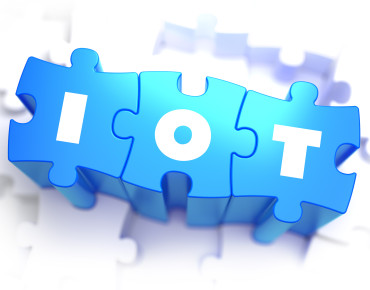Ubiquitous Connected Devices Drive IoT Forecasts

(Source: Shutterstock - Tashatuvango)
The potential of the Internet of Things rests with "the huge number of things that are not connected today," a universe that extends beyond connected machines to objects and eventually humans, an industry analyst asserts.
"It's that delta between what's connected today and what we think will become connected tomorrow," said Bill Morelli, IoT research director at IHS during a recent IoT webinar.
The IoT is not a specific technology or product, but rather a conceptual framework, Morelli explained, in which intelligence is embedded in connected devices. "IoT can be used to provide unique value propositions and create complex information systems which are greater than the sum of the individual components," he added.
Part of the value derived from networks of connected things is the ability to collect data from all those devices, aggregate and analyze data and derive value using big data techniques. "The power of IoT is that is can be used to provide a unique value proposition that is greater than the sum of the parts," Morelli argued.
Unlike standard five-year market projections, IHS extends its IoT forecast out to 2025 since "many of the IoT implementations and applications areas and use cases really are much longer term investments," the IoT analyst said. IHS estimates an installed base of more than 75 billion devices by 2025, which works out to a 17.3 percent compound annual growth rate over the next decade.

Source: IHS
The bullish forecast is driven by the seemingly endless number of objects that could be connected, ranging in Morelli's estimation from Bluetooth-enabled medical sensors to cellular-equipped tractors that could be used not only to plow fields and plant seeds but also to monitor fertilizer and seed distribution.
By 2025, IHS estimates that 21 billion devices will be shipped that could be connected to the Internet. Some will, some won't, Morelli noted.
IHS breaks down IoT market into a range of segments spanning everything from industrial to consumer. The IT infrastructure required to support the IoT is expected to boost demand for cloud computing and storage along with servers and datacenters. It is also expected to "increase processing in edge devices" as intelligence is steadily moved closer to data.
The connection of more devices and the influx of data they will capture are expected to drive investments in platform development, the applications that run on them and the analytics needed to make sense of the data haul.
The IT sector is not growing as fast as other market segments, hence Morelli said IHS expects server demand to grow only "moderately" over the next decade. "The real IoT analytics questions are just now starting to be asked," he explained, "and where that processing its going to happen." Decisions about where information is processed will dictate what future network architectures look like, he added.
The industrial sector, meanwhile, is expected to lead the way for IoT deployment with a nearly 27 percent annual growth rate through 2025. That works out to about 34 billion devices, Morelli forecast. Early applications include fleet management and asset tracking. However, industrial automation is expected to be the big driver as IoT technologies are applied to manufacturing. Among the challenges for the industrial IoT are figuring out how wirelessly connect very expensive equipment in the "challenging" communications environment of the shop floor running multiple communications protocols, Morelli noted.
Along with the expanded computing and storage capacity provided by datacenters along with ultra-low-power processors, Morelli said the sheer number of "IP-addressable devices" is driving IoT deployment. Once the uses cases are fleshed out, "the commercial benefits are expected to drive increased connectivity."
Meanwhile, something of a backlash has been growing over the notion of "smart" objects in response to the recent hack of Chrysler Jeep Cherokee speeding down a highway.
Related
George Leopold has written about science and technology for more than 30 years, focusing on electronics and aerospace technology. He previously served as executive editor of Electronic Engineering Times. Leopold is the author of "Calculated Risk: The Supersonic Life and Times of Gus Grissom" (Purdue University Press, 2016).










